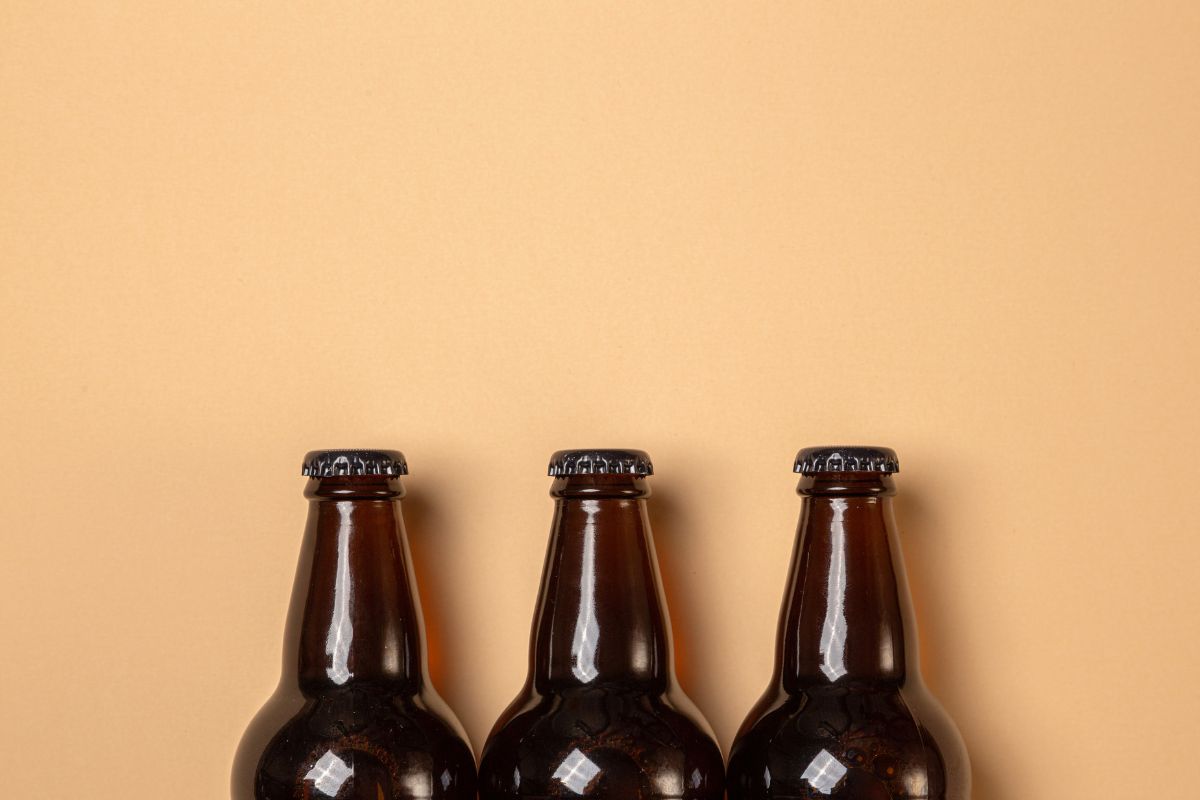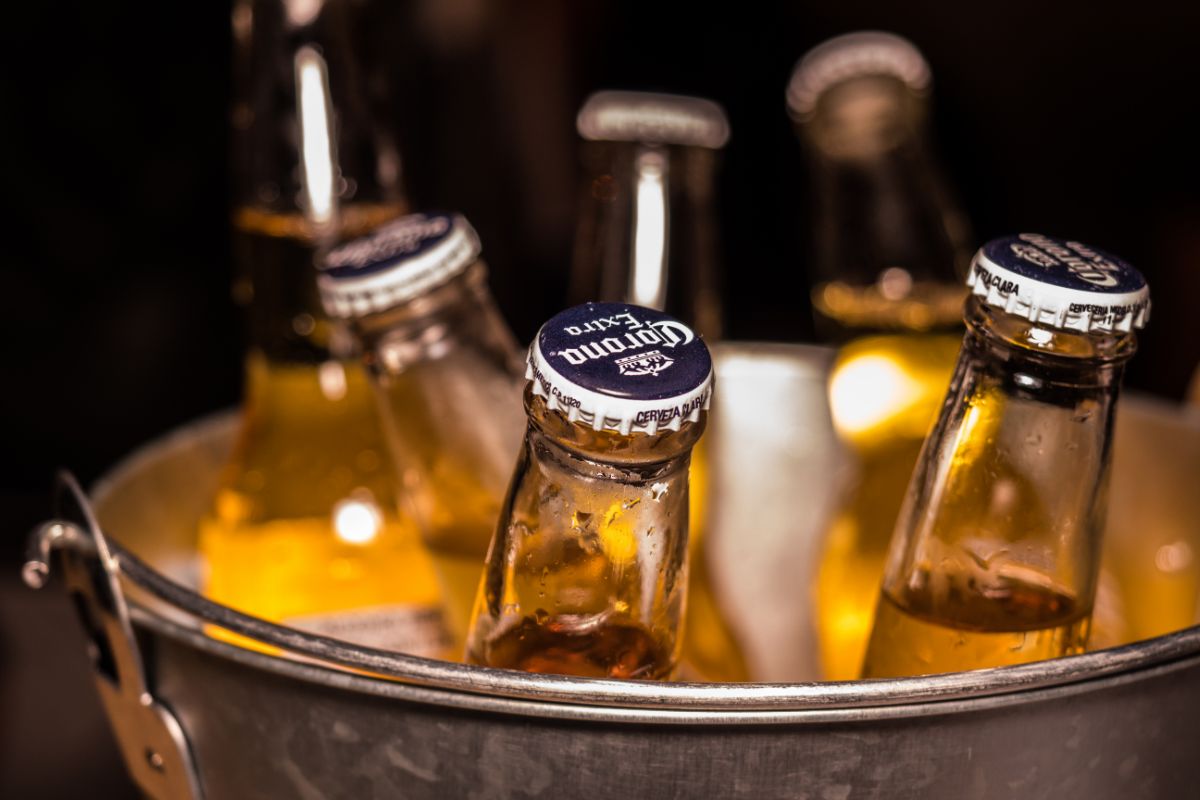If you’re at all interested in brewing your own beer, you’re probably familiar with the concept of kegging. Most people keg their beer because it’s the easiest and most convenient option.
However, there is another way to carbonate your beer: bottle conditioning. While some beers typically end up tasting better after kegging, others (such as Belgian beers and barley wines) usually taste better after the bottle conditioning process.

One big question a lot of home brewers have is how long to bottle condition beer. This is the question we’ll answer in today’s guide.
What Does It Mean To Bottle Condition Beer?
If you’re totally new to the concept of bottle conditioning, here’s what you need to know:
Bottle conditioning is the process of carbonating your beer after fermentation. When fermentation does not take place under pressure, you’re left with flat beer. Therefore, a separate carbonation process is needed.
As mentioned above, you can carbonate your beer in a keg. However, you can also do so in a bottle, and this is known as bottle conditioning. You might also hear it called secondary fermentation.
When you bottle condition beer, you typically add sugar once the beer has been fermented. The addition of the sugar reactivates the yeast cells left behind, and these cells consume the sugars in the beer.
This is what causes the carbonation. The reactivation of the yeast cells is why bottle conditioning is sometimes called secondary fermentation.
How Long It Takes To Bottle Condition Beer
Unfortunately, there isn’t a simple answer to how long it takes to bottle condition beer. That’s because many different factors impact bottle conditioning time, as we’ll discuss in more detail in a moment.
In some cases, bottle conditioning can take just 1 week. However, most of the time, beer takes an average of 2 weeks to become fully carbonated in the bottle.
Generally speaking, the longer you leave your beer to condition in the bottle, the more carbonated it will get and the better it is likely to taste.
To achieve maximum carbonation, you can leave your beer in the bottle for up to 4 weeks most of the time.
However, be aware that hoppy beers are a little different. Hops can start to break down with time, which means that leaving these kinds of beer to condition for 4 weeks may have unwanted effects.
Therefore, a maximum of 2 weeks is recommended for these beers.

Factors That Influence Bottle Conditioning Time
We mentioned earlier that several factors can impact the length of time it takes to bottle condition beer. As you can see from the information above, one of these factors is the type of beer you’re brewing, but it’s not the only one.
Temperature
Just as the fermentation process needs to take place at a certain temperature to work properly, the same is true of bottle conditioning.
When bottle conditioning your beer, you should aim to keep the temperature no lower than 65 degrees Fahrenheit and no higher than 78 degrees.
If the temperature is too low or too high when you bottle condition your beer, the timing of the carbonation process could be impacted, and you might struggle to achieve carbonation at all.
Yeast
The type of yeast used in the brewing process is one major factor that will impact how long you should leave the beer to condition. In general, a robust and healthy strain of yeast should allow you to carbonate your beer in around 2 weeks.
However, if you use a weaker strain of yeast, your beer might take longer to condition, or it might not carbonate at all.
Sugar
The kind of sugar you add to the fermented beer is also a relevant factor. Corn sugar, malt extract, and honey are all sources of sugar used by brewers to carbonate beer.
You could also use carbonation drops, which are made of corn sugar. We recommend carbonation drops because they’re specifically designed to create optimal carbonation levels.
Final Thoughts
How long does it take to bottle condition beer? Well, that depends on the type of beer you’re brewing, the sugar and yeast you use, and the temperature during the carbonation process.
Most beers will be carbonated through bottle conditioning in around 2 weeks, with maximum carbonation sometimes taking around 4 weeks. However, for hoppy beers, maximum carbonation usually happens at the 2-week mark.
More rarely, you can reach the desired carbonation level within a week, depending on the type of beer and the factors listed above.
Frequently Asked Questions
Even when you know how long beer takes to carbonate on average, you need to know the signs of optimal carbonation, so you know when to stop bottle conditioning your beer. Remember, leaving the beer for 4 weeks isn’t the best option for all beer types.
You can try using a malleable bottle, like a plastic bottle, and doing a touch test to see if the bottle is getting firmer. When the bottle is hard, the beer is fully carbonated.
Alternatively, just do a taste test after 1 week and listen for a hissing noise as you open the bottle. Repeat the taste test until you can tell that the beer is properly carbonated.
This is a common question. While it is true that in the process of turning sugars into carbon dioxide, the yeast cells also produce more alcohol, the amount created is very small.
You won’t be able to notice the extra alcohol created in your beer when you drink it, so we wouldn’t recommend bottle conditioning solely for the purpose of making your beer more alcoholic.
Before carbonating your beer with the bottle conditioning method, make sure the beer has reached final gravity through the process of fermentation (use a hydrometer or refractor to test this).
Then, make sure all your conditioning equipment is sanitized before you add the fermented beer and sugar.
- StockHouseBrewing.com is being acquired by MomentumBrewHouse.com - October 24, 2023
- MomentumBrewHouse.com Acquires EmpiricalBrewery.com - August 31, 2023
- How Many Calories Are In A Bottle Of Beer? - May 24, 2023
